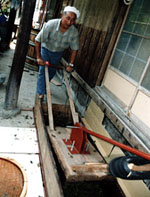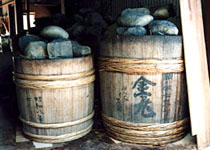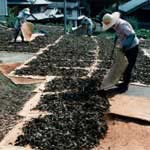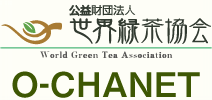Home > Encyclopedia of O-CHA(tea) > Awabancha & Goishicha in Tosa prefecture
Main content starts here.
![]()
Awabancha & Goishicha in Tosa prefecture
There
are many unique ways to process
tea in Shikoku region. Especially
Goishicha from Tosa prefecture.
To make Goishicha, first steam tea
leaves, then stack those tea on
the ground, and next cover with
a mat, and ferment. After that,
stuff the tea leaves into a barrel
and cover, place a weigh on the
top of the cover and ferment again.
Finally, take out the solid tea,
and cut it into 3cm under the sun.
This is called as Goishicha since
the shape of the piece looks like
"goishi"(Oriental chess piece).
There is also a kind of tea called
"Awabancha" in Aoicho, and Kamikatsucho
in Tokushima prefecture. During
the summer, pick all the tea leaves,
then boil them. After boiling the
tea leaves, rub them, place them
in a barrel to ferment. Then dry
them under the sun. Goishicha was
mainly sold to the people live on
the islands in Seto inland sea for
the purpose of making tea porridge,
Awabancha by comparison was drunk
like a normal tea. Tea which used
bacteria for the process is called
"atohakkou" (after fermation). Other
country such as China, Thailand
or Myanmar have the same type of
processed tea, and go by the name
of Mian in Thailand, and Rapeso
in Myanmar and they are categorized
as pickeled tea.
These pickle
tea are for eating, but the way
of processing the tea is the same.
Moreover, in Myanmer some tea is
also used for drinking after drying.
Why Shikoku region of Japan has
the same way of processing tea as
South East Asia or China? Some local
people say that Kukai( a famouns
Japanese monk from Hian period)
brought introduced to people in
Shikoku However this mysterious
connection can tell us there was
a some kind of connection between
Japan and China or South East Asia
at the time.
(Yoichiro Nakamura)

Tea
processor for making Awabancha
(Kamikatsu
cho)

Awabancha (pickle)

Dry
Awabancha under the sun
(Aoi
cho in Tokushima prefecture)
